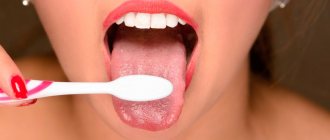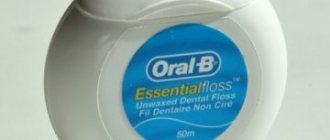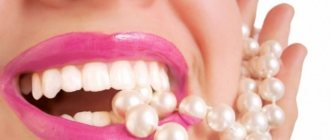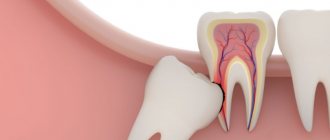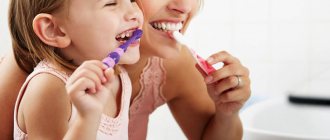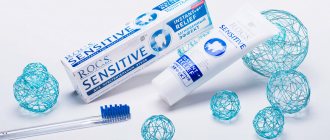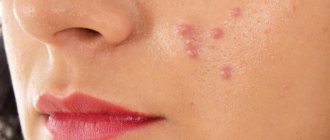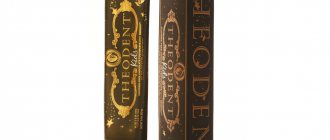How to make teething easier, rules for caring for first teeth
Sleepless nights, but such long-awaited first teeth! We rejoice at every white lump in our child’s mouth. And every time we ask ourselves the question: “How can I make teething easier for my baby? How to get rid of pain?
At the moment, the International Association of Pediatric Dentistry (IAPD) does not recommend the use of gels based on the anesthetic lidocaine.
Why? After all, each of us wants to make this period easier for the baby. Firstly, the relief will last only 2-3 minutes, and secondly, frequent application of such gels can lead to a toxic effect.
Rules for caring for first teeth
Full hygienic care of the first teeth should begin from their eruption. What is it?
- baby teeth must be brushed 2 times a day with vertical movements with a finger or a brush in order to remove plaque;
- After each meal, the mouth should be rinsed;
- The child’s intake of sweets should be kept to a minimum;
- pacifiers must be thoroughly washed before giving to the baby;
- You should visit the dentist at least once every 3 months.
Important!
A child under 10 years old cannot yet brush his or her own teeth, so parents must help them brush their teeth properly.
How does caries occur?
The main causes of caries are improper oral care combined with poor diet. During the day, a plaque consisting of food debris and particles of saliva forms on the surface of the enamel. A particular danger to enamel is lactic acid, which is formed from sugars under the influence of microbes that inhabit the oral cavity.
Another cause of caries is the formation of a malocclusion. What can disrupt the formation of bite? At the age of 2 to 6 years, the following reasons are important: defective posture, mouth breathing, chewing and swallowing with an open mouth, the predominance of soft foods in the diet that do not require active chewing, the child’s habit of holding food in his cheek for a long time.
How to care for baby teeth?
Children's first teeth are especially susceptible to pathogenic microorganisms, which, with insufficient hygiene, lead to carious enamel lesions and pulp inflammation
Care consists of wiping, using a special paste and brush that is suitable for the baby’s age.
Choosing a brush and toothpaste for your baby
The tooth enamel of a child under 1.5 years of age is the most fragile and delicate. Taking this into account, you need to find a conveniently shaped brush in children's stores or pharmacies with rubber edges, rounded and soft bristles and a cleaning surface length of no more than 1.5 cm. Manufacturers often indicate the recommended age of children (from 0 to 6 months, from 6 months to a year and etc.).
At the Profident Junior clinic you will find the right care and provide you with ]professional teeth cleaning in Odessa[/anchor]!
Instead of the first brush, you can use a silicone fingertip with raised protrusions, but babies often “taste” it, partially biting the parent’s finger with their incisors.
Considering that a child absorbs up to 70% of toothpaste with saliva, you need to pay attention to products with a special composition that is safe for entry into the gastrointestinal tract. According to pediatricians and pediatric dentists, “Weleda”, “Country of Fairy Tales”, “ROKS baby”, “Nenedent” are considered excellent options for the youngest (from 0 to 6 months and beyond).
Teethers
The safest and most effective way to alleviate the baby's condition is to use gel teethers, which must be cooled beforehand.
What types of teethers are there and how to choose them?
Today there are a lot of gel and plastic teethers and we want to help you with this difficult task.
Firstly, teethers must be safe - it is advisable that they be round in shape and not have additional protrusions that can be traumatic for the mouth and eyes. In addition, they should be comfortable for the baby himself. And lastly, teethers often have silicone protrusions that should be smooth and not too large.
You can also find plastic teethers in the form of a toothbrush. Please note that the silicone parts on the head should be located around the perimeter, should not be hard, or on one side, performing the function of a toothbrush.
Also pay attention to the limiters to avoid trauma to the oral cavity and deep penetration of this teether or the wide, ergonomic handle.
Visiting the dentist
- at 9 months
- at 12 months
- Twice a year
Observation of teeth erupting. Examination of children for early diagnosis of abnormalities in the pathology of the dental system. Recommendations for brushing teeth. Selection of oral hygiene products. Removing dental plaque and plaque (if necessary).
Teeth cleaning
In the morning after breakfast and in the evening before bed. Teeth brushing time is 3 minutes.
Basic oral hygiene products:
- Manual toothbrush
- Toothpaste
The first children's toothbrush should be like this: with a small atraumatic rounded head; with very soft bristles; The tips of each bristle should be rounded and polished.
FIRST TEETH - parents brush!
Carefully clean the gums and wipe the teeth with damp gauze or special soft napkins (cloth fingertips), directing movements from the gums to the cutting edge of the tooth. Use children's toothbrushes, but without toothpaste for 2 YEARS - the child brushes his teeth under the supervision of his parents! Use children's toothbrushes with toothpaste for 3 YEARS - the child brushes his teeth independently, but under the supervision of his parents! Use children's toothbrushes with toothpaste
Nutrition:
Breastfeeding for up to a year. Avoid drinking sugar-containing drinks at night (juices, compotes, sweet kefir, etc.). Avoid eating sugar-containing foods (sweets, cookies, chips, etc.) between main meals. Consume foods that are healthy for your teeth, containing small amounts of sugar and sufficient amounts of vitamins and minerals. It is beneficial to eat solid foods, raw vegetables and fruits.
| Healthy foods for teeth Raw vegetables and fruits Nuts, dried fruits Milk, cheese, meat Fish, tea | Harmful foods for teeth Caramel, lollipops, chocolate Sweet carbonated drinks Sugar-containing chewing gum |
Teething:
First, the gums swell and look slightly inflamed, then the area where the tooth will appear turns white. This phenomenon occurs due to upward movement of the tooth. It shines through the thinning gum, causing its color to change. The final stage is the appearance of the tooth.
How to help with teething?
Use a teether made of non-allergenic polymers or silicone. Teethers can be liquid-filled or solid (the teether should be sterilized and cooled before each use).
Use gels for gums when teething, which have an analgesic effect.
Gels may contain anesthetics, antiseptic, and anti-inflammatory components. Anesthetic gels act superficially, but during teething they should not be used more than six times a day. Be sure to consult your dentist or pediatrician.
Early childhood caries
Early childhood caries is typical for children from one to three years of age. Most often, the cause of the development of this disease is infection of the child from parents with cariogenic microflora, consumption of sugar-containing drinks at night (juices, compotes, sweet kefir, etc.) and lack of oral hygiene.
The carious process first affects all 4 front teeth (upper incisors). Caries affects almost the entire surface of the erupted front teeth, the enamel of which at this age is still immature and fragile. Then the remaining primary teeth of the child begin to be affected by caries. The carious process progresses rapidly, leading to tooth decay and early removal.
How to prevent caries in primary teeth?
Be sure to sterilize bottles, pacifiers, baby toys and teethers! Do not take food samples from your child's spoon! Limit breastfeeding (after a year) and consumption of carbohydrates (sweets) at night! By the age of one year, a child should not suck a pacifier!
Average time for eruption of primary teeth.
| Central incisors | 6-8 months |
| Lateral incisors | 8-10 months |
| Fangs | 16-20 months |
| First molars | 12-16 months |
| Second molars | 20-30 months |
Timely and consistent teething indicates the normal development of the child’s body. Violation of the timing and sequence of eruption can occur with endocrine and metabolic disorders or general diseases of the child.
Remember that you should contact the dentist when the child is healthy and does not experience toothache!
How to choose a toothbrush for a child
In this age group, both manual and electric brushes can be used. Brushes and attachments should be replaced every 2–3 months, as well as immediately after an acute infectious disease.
When choosing a suitable brush, pay attention to the following criteria.
- Age of the child. This is simple - pay attention to the age marking when choosing. For brushes recommended from 3 to 5 years, the length of the handle does not exceed 15 cm and the length of the head is 2 cm. From 5 to 8 years, the handle is up to 17 cm, the head is 2–2.5 cm.
- The stiffness of the bristles. Soft or ultra-soft bristles are suitable for children.
- Handle - should have anti-slip silicone or rubber inserts. Since fine motor skills are still developing, the brush should be such that the child can confidently hold it in his hands.
- Design. A brush with a bright design or with a favorite character will help get your child interested in brushing their teeth.
Choosing a brush and toothpaste for your baby
How to choose a toothbrush
Conventional, electric or ultrasonic? Soft or hard? Synthetic or natural? Accurate answers to all questions.
A baby toothbrush looks like this.
It has a short working part - from 18 to 25 mm. Until the age of five, a child has a brush with very soft (extra soft) synthetic bristles, and from a later age - with soft bristles with rounded ends. The handle of the children's brush is thicker, with non-slip inserts - this makes it easier for the baby to hold it. Children's toothpastes
are also different from adults. They are low in abrasives, low in fluoride, and contain fruity fragrances and flavors. Look carefully at what age of children this or that toothpaste is intended for.
At what age can you start using a children's irrigator?
You can get used to using an irrigator from the age of three. It is important to start using it carefully, gradually accustoming the child. In this case, it is important to use gentle modes, avoiding strong pressure of the liquid on the gums and teeth.
To accustom your baby to the waterpik, start using it through an entertaining game. In this case, cleaning will turn into fun, will bring joy to the child, and through this the habit of using the irrigator will be formed in the future. And this is a sure guarantee of beautiful teeth and healthy gums.
Author of the article
Basic preventive measures
Proper nutrition:
- Limiting easily digestible carbohydrates contained in confectionery products.
- Do not eat sweets at night.
- Do not eat sweets between main meals.
- If paragraphs 2 and 3 have been violated, you must thoroughly rinse your mouth or brush your teeth.
- Ensuring sufficient chewing load (introducing vegetables into the diet).
- For normal teeth growth, you need dairy products, fish, which contain calcium and phosphorus, as well as vegetables and fruits rich in vitamins.
Gels
The period of teething in a baby is one of the most troubling for parents, as it is accompanied by changes in mood, crying of the baby, fever, and sometimes more serious symptoms reminiscent of colds.
How to understand that the period of teeth growth has begun?
The main signs will be redness and swelling of the gums; in those places where the tooth will soon appear, the gums will become light. At the same time, saliva will actively begin to be released. The child, with even greater activity, puts into his mouth everything that is at hand - this helps him relieve the feeling of itching and discomfort in the mouth. Often the teething period is accompanied by a decrease in appetite, as it is painful for the baby to eat.
How can you help your child cope with the problem?
You can buy baby teethers. You can also use a special medical silicone fingertip and massage your baby’s gums - this will help relieve the itching.
How to choose toothpaste
- You should start brushing your child’s teeth the moment his or her first baby tooth emerges. This usually occurs at 6 months, but can be later or earlier.
- Use fluoride toothpaste because fluoride prevents tooth decay.
- There is no need to buy special baby toothpaste. In fact, such toothpastes often do not contain enough fluoride.
- Children under 7 years of age can use toothpaste for sensitive teeth that contains no more than 1000 ppm of fluoride. The fluoride content can be read on the packaging or checked with your dentist.
- Children over 7 years old can use regular toothpaste as long as it contains 1350-1500 ppm fluoride.
- Make sure that your child does not swallow toothpaste, because... Excess fluoride is harmful to the body.

